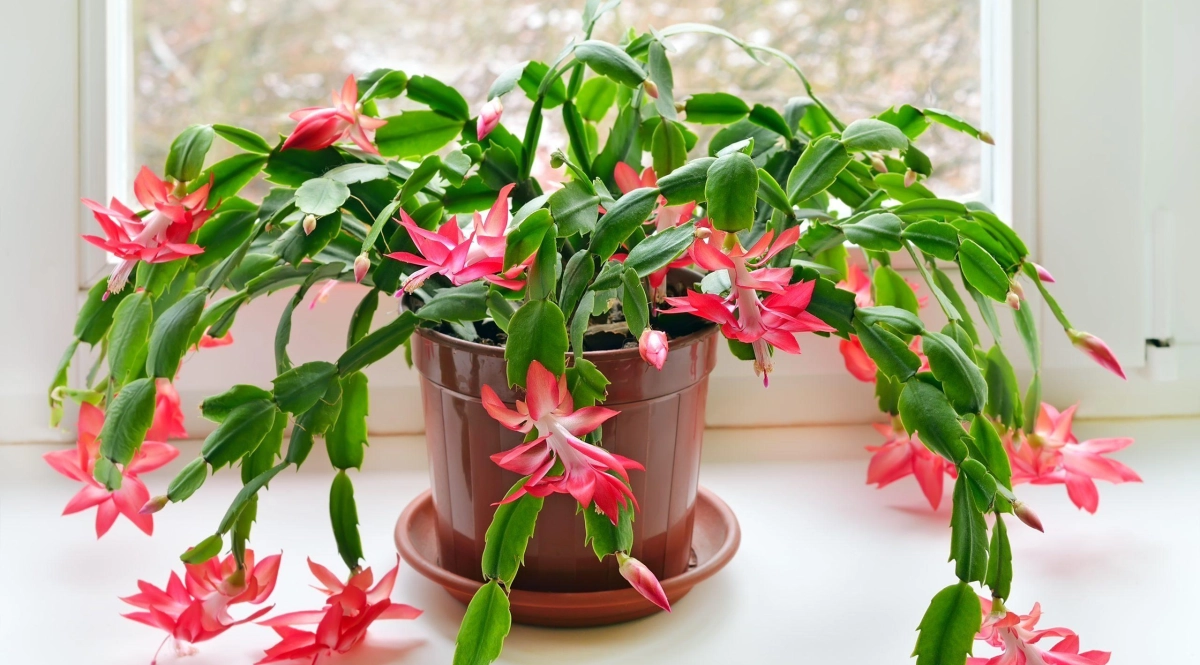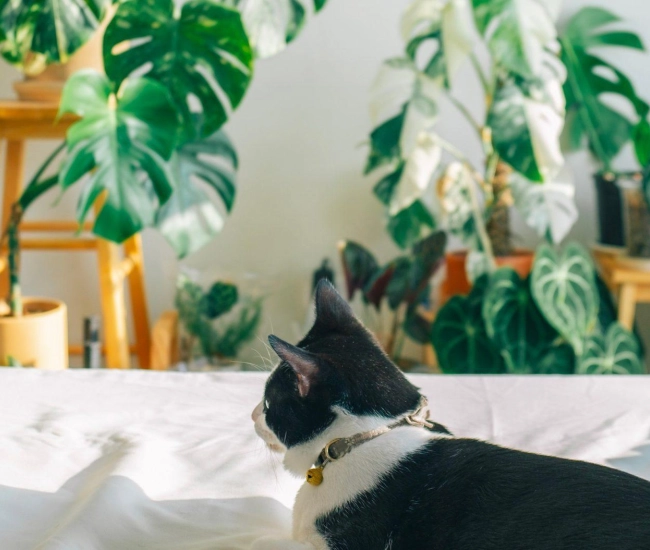
Native to the tropical regions of South America, particularly Brazil, the Christmas cactus is undoubtedly one of the most popular flowering houseplants. This beautiful epiphytic plant, which naturally grows in the crevices of branches or trunks where accumulated organic matter serves as a substrate, was named Schlumbergera in the 19th century in honor of the famous cactus collector Frédéric Schlumberger. Since then, six species have been developed, but the most common in our garden centers is Schlumbergera X buckleyi.
A very special cactus
Although most plants in the cactus family are distinguished by the presence of spines or needles on their stems, the Christmas cactus is free of them. Composed of flattened leaves called "segments," fused one after the other and bearing fine notches on the edges, the fleshy stems of the Schlumbergera delicately arch downward. When the days shorten and the nights grow longer, fine and long flower buds develop at the tips of its new leaves. Around mid-autumn, magnificent trumpet-shaped flowers open to offer a unique spectacle. Its blooming – white, pink, red, peach, purple, or yellow, depending on the variety – lasts several days, even weeks. Under good conditions, it may happen that the Christmas cactus produces a second bloom in winter; however, this will be less abundant.
Why doesn't my Christmas cactus bloom at Christmas?
This question, quite legitimate, is frequently asked during my lectures. The answer is simple... As mentioned earlier, the most sold and well-known Christmas cactus is the Schlumbergera X buckleyi. This one is a hybrid between two species, namely Schlumbergera russelliana (whose flowering mainly occurs during the winter months) and Schlumbergera truncata (whose flowering is more autumnal). That's why its flowering time is more autumnal and it may sometimes rebloom in winter.
Easy to grow
Like all plants, cacti need water. In summer, deep and frequent waterings are recommended. Allow the soil to dry out almost completely between waterings. In winter, you will need to space out the waterings, except during the flowering period.
In both summer and winter, excessive heat and light exposure can cause damage. An east or west orientation and temperatures of 20°C to 25°C during the day and 10°C to 15°C at night will be favorable. In summer, outdoors, a partially shaded exposure is perfectly suitable.
From May to August, monthly applications of fertilizer rich in potassium and phosphorus will contribute to its good development. In winter, no fertilizer is recommended, since your Christmas cactus will need a rest period after its flowering.

Text: Hélène Baril – Horticulturist, lecturer & author
Tips and advice



